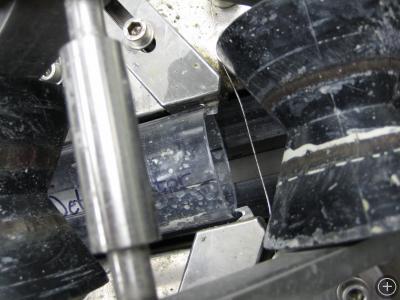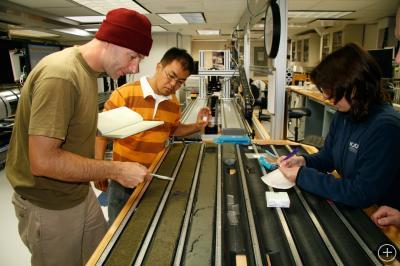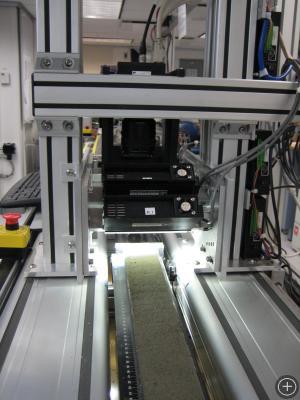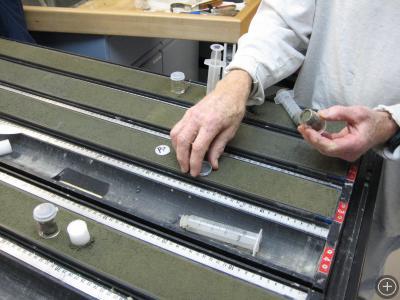What Is All This Coring Stuff about Anyway?, Part 2
ABOARD THE JOIDES RESOLUTION, ON THE BERING SEA– This is the second installment in the two part summary of the life of a core on board the JOIDES Resolution. They are the ultimate reason we are out here, so what happens to them should be everyone’s primary concern. So where were we? Oh yes, we had just finished a series of steps that allowed us to learn a little bit more about the cores while they are in their whole state. Now let’s see what happens next.
Step four: The technicians cut the whole core into halves. They have a neat device designed specifically for this process with two razors that cut the core tube which houses the mud. There is a thin wire like a cheese slicer that cuts through the mud, and usually a quick tap on the table separates the core into two even halves. Occasionally rock or tough deposits require a turn with the circular saw to divide them up neatly.
Step five: The core halves at this point are sent in two directions
* Core description – The “archive” halves of a complete core are sent to a table where each is sent to be imaged. During this process the surface that was cut is scraped clear of any material that may have been moved during the cutting process. The revealed surfaces are visually described by sedimentologists as the imaging station takes detailed digital images of the cores. The magnetic properties are often measured at this point. After this each core section is wrapped in plastic, stored in containers called “D tubes” (because they hold the half cylinder D shaped cores), boxed for storage and taken to be refrigerated.
Sampling – The “working” half of each section is placed on a table where those scientists working on a sampling shift collect the predetermined samples from areas designated for testing. Spot samples can be taken for interesting or potentially fragile zones that appear. These samples will eventually be tested for physical properties, sorting by sediment size and composition, microbiology (what life is in them, or byproducts of living things), paleontologists (those who study microfossils and remains of organisms such as forams, radiolarans, dinoflagellates and ostracods). If any testing is done at this point it is minimalistic so that the cores can be better characterized for later detailed sampling.
Step six: As soon as data starts coming in about the cores the Stratigraphic Correlators kick into gear. They use any and all data that is collected to create a best fit composite image of the area from the various holes drilled. Along the way they give input into future drilling so that core section breaks don’t overlap, and problem areas are recovered in as pristine a fashion as possible.
That’s a lot of stuff to digest. Learning it on site took a while to comprehend, and there are still many places where I could expand my knowledge, but hopefully we all have a basic understanding of what happens to cores on the JR. Any questions? I hope so. Check back soon!

 No comments
No comments 









